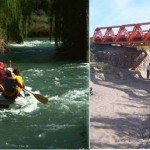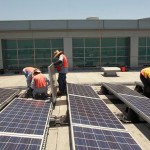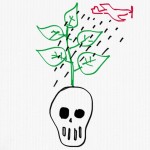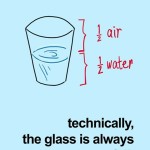The extraction of Natural Resources:
Dear readers,
Greetings from the plain lands of Argentina! For this delivery, I decided to draw up a short summary on the extraction of natural resources based on excerpts from the formidable work of Annie Leonard, an expert in international sustainable development and environmental health from the US. Her book is “The Story of Stuff”, Annie Leonard, Ed. Fondo de Cultura Económica, Argentina, 2010.
In this work, Leonard investigates the various stages of the linear production cycle of the creation of things, dividing them into extraction, production, distribution, consumption and disposal. Here I present a summary of the first stage and in subsequent deliveries I will discuss the other stages.
TREES
In order to understand the importance of trees in nature, we must understand the benefits they provide. These benefits are services -or functions- that are carried on by trees for us for free, and are known as ecosystemical benefits. Leonard explains that forests harvest and filter our freshwater, which maintains the hydrological cycle of the planet and moderate floods or droughts. They retain the soil’s health because they maintain in place the fertile topsoil, rich in nutrients. (…) a fourth of our medicines are derived from there (p. 46 And 47). And she adds that the values of these services are cloud completely the price of timber production from a cut forest (p. 49) That is to say that the price that costs planting an artificial forest to cut it later on for its use in the production process, is much less than what we would pay Nature to carry out all the ecosystemical services that the forest provides as a natural entity. In addition, the goal of these plantations is the production of wood, with little or no consideration for the many other services, resources and habitats provided by forests and natural forests. (P. 50)
Another problem that exists are the strippings, which is to say the areas that are peeled after all the trees are cut down. The clearings left behind do not maintain the soil or absorb water. During heavy rains, the water runs over the denuded hills and cause mudslides, floods and erosion. The impoverished earth collapses, clogs waterways and buries communities. Downstream, the water and mud destroy properties, and sometimes injure or kill people. (P. 51) And she expands the information: The floor of a healthy forest is covered with an organic matter called “humus”, which is kept in its place, thanks to the roots of trees and an abundance of shrubs. The humus decomposes perfectly well in the presence of insects and oxygen, and thus replenishing the soil with nutrients in a consistent manner. The surface is exposed, so the first rain drags the rich soil down the hill to the rivers, where it is transformed into a polluting substance (p. 56)
WATER
Access to this resource in the world is scary. During the last century, the use of water increased sixfold, that is to say that its consumption index doubled the population growth index. There are more people who use more water: this is not a sustainable path.
( …)
The excessive use of water, joined to droughts, pollution, climatic shocks, the detour toward industrial and agricultural uses, as well as inequality in access, will contribute to the shortage of this resource. (P. 61)
In the same way in which the GDP has outsourced several environmental costs, with water happens something similar, because its consumption is usually related to the direct consumption, to drink, but it is not usually taken into account the water used in other processes. Virtual water is the amount of water inserted into food and other products, which is to say the amount of water required to extract and produce each article (p. 62)
As well as it is necessary to reorganize the collection of taxes, increasing taxes on polluting companies, it is also necessary for companies to take into account the totality of water consumed in the production process. What is expected on holding companies responsible for the total costs involved in the use of water is that they begin to use technological adjustments that allow the use and waste less. However, the economic or market-based strategies hide some dangers; for example, to compel companies to count the externalized costs will cause an increase in prices when industries move the increase in costs to their customers. (…), the increase in prices for basic goods can be devastating to the poorest communities of the world (p. 64)
MINING
The extraction of minerals from the Earth tends to arise in areas where the land is rich in nutrients. And here is the same scene again and again: indigenous people and native communities are persecuted in order to take over their territory and extract their riches.
In a report on the mining industry in India, in which the maps of minerals where compared with the maps of the forest, it was discovered that the highest concentrations of coal, iron, and bauxite (that is the one used to make aluminium) exist in forest areas that concentrate the largest part of the biodiversity present in the country and which are also home to indigenous peoples (p. 66 67)
The sad thing is that with mining, the only thing that matters is the final product, the mineral itself, and it does not matter how it is produced. This generates political divisions, civil wars, inequality, and a huge lack of interest towards the people who originally lived in the desirable land. In the year 2000, when the international price shot up to $300 per pound of refined mineral (in part because of the major release of the gaming console Play Station 2 by Sony), thousands of Congolese opened their way to the lush green jungles to gather minerals, destroying national parks and other pristine lands, killing gorillas to eat, and ruining animal habitats. Various armies (official and rebel) were launched to seize the business, often using children and prisoners of war. They also brutally raped the women of the place (the UN calculates 45 thousand violations only in 2005) and introduced prostitution and illegal arms trade. Oona King, a member of the British parliament, described the situation: “The children of the congo are sent to die in the mines for children in Europe and North America can kill imaginary aliens in the living room of their house” (p. 73 And 74)
The particular case of the Oil:
The operation of machines and vehicles, as well as the heating of our buildings, absorbs 84% of the oil consumed every year. The oil is also an ingredient in many things: the remaining 16% is used in the manufacture of plastics, drugs and fertilizers, and also in other things, such as crayons, gum, ink, dishwashing liquid soap, deodorant, tires and ammonia.
(…) the other big problem with oil is that it has nearly run out. (…) it is estimated that the oil peak will come in 2020 but it is possible to experience a “peak” before as demand exceeds the rate of the supply and oil extraction increases its costs even more.
( …) after assessing 800 important oil fields around the world (three quarters of the world’s reserves), the IEA (International Energy Agency) reported that the oil is depleting more quickly than what the agency had estimated just two years ago, by which the energy consumption patterns are “clearly unsustainable” (p. 75 And 76)
The best solution (…) is to increase the durability of our machineries and expand their useful life, in order to not having to discard them and replace them so quickly. It is also necessary to require manufacturers to take back electronic equipments when we have finished using them. (P. 75)
RECONSIDERING THE EXTRACTION:
To begin to implement changes in the system extractive resource, we first need to make changes in the mentality of society. These changes should be made, first and foremost, of consumption. That is to say, generate changes in the consumer habits of each, to reflect these changes, first in demand, and then in the supply of products consumed.
(…) “average rates of consumption of resources such as oil and metals, and production of wastes such as plastics and greenhouse gases, are approximately 32 times higher in North America, western Europe, Japan and Australia than in the less developed world”. United States consumes the highest percentage; with only 5% of the world’s population, it accounts for around 30% of the resources consumed. In a nutshell, 25% of the world’s population, who live in the industrialized countries, consume approximately 75% of global resources.
In fact, the entire population of the planet collectively consumes more resources than what the planet produces per year: each year we consume resources equivalent to the biocapacity of 1.4 planets. Are we consuming more resources than the planet produces per year? It seems impossible. In fact, is only possible because the planet has existed since some time before us and had time to accumulate extra resources. But now those extra resources are running out. It is as if in a home the income of many years is saved in order to wipe them down right afterwards. Its members will be able to spend more than what they earn for a period of time thanks to their savings, but at some point there will be nothing left. And that is what is happening to the planet.
In addition, if all the countries would consume resources in the same proportions as the United States, we would need about 5 planets in order to sustain ourselves.
(…) the inclusion of the concept of equity implies that it is not simply that we all reduce the use of resources, because such a conclusion would be grossly unfair. Some parts of the world, such as the United States and Europe, must consume less resources, while other countries, need to increase their consumption in order to meet their basic needs. (P. 87)
TRANSFORMING THE EXTRACTION
Leonard points out some good ways to reduce the net consumption of resources (p. 88):
1) Extract less (consuming less);
2) Ensure that the extraction processes sustain the welfare of workers, the community and the environment;
3) Increase efficiency or productivity of the resources that we use;
4) Improve the programs of reuse, and recycling
5) Seek alternative forms to meet our needs
6) Redesign the products we use
On this last point, Leonard explains the qualities to be redesigned to ensure that the products are:
- Durable, so that the products can be used for a longer period of time and are not necessary to discard and replace them so quickly;
- Repairable, with the added benefit of the increase in jobs;
- Recyclable, for which it is necessary to choose the materials in accordance with its ability to maintain the integrity when recycled. Some materials degrade quickly, while others allow multiple recycles.
- Adaptable, so that we do not throw away our cell phones, laptops, etc. When new functions arise, these items may have removable components or updateable, such as the camera lenses. The financial investment or additional materials required in the implementation of this change in the whole system will be more than offset by the costs saved in the reduced extraction of new materials. (P. 89)

















Boletín Consciente N° 23 | Ploff.net Oct 17 , 2011 at 06:34 AM /
[…] imágenes traen consciencia sobre cómo extremos nuestros recursos en forma desmesurada. Y más molesto aún, me deja pensando sobre la cantidad de personas de nuestra misma edad que […]
Boletín Consciente N° 23 | Ploff.net Oct 17 , 2011 at 06:34 AM /
[…] imágenes traen consciencia sobre cómo extremos nuestros recursos en forma desmesurada. Y más molesto aún, me deja pensando sobre la cantidad de personas de nuestra misma edad que […]